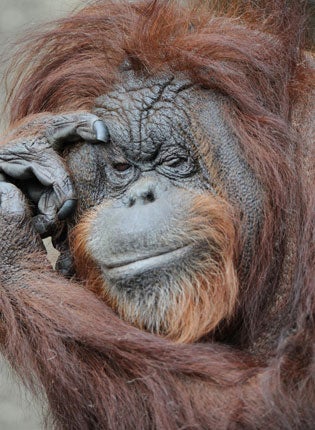Tokyo says goodbye to Molly

Your support helps us to tell the story
From reproductive rights to climate change to Big Tech, The Independent is on the ground when the story is developing. Whether it's investigating the financials of Elon Musk's pro-Trump PAC or producing our latest documentary, 'The A Word', which shines a light on the American women fighting for reproductive rights, we know how important it is to parse out the facts from the messaging.
At such a critical moment in US history, we need reporters on the ground. Your donation allows us to keep sending journalists to speak to both sides of the story.
The Independent is trusted by Americans across the entire political spectrum. And unlike many other quality news outlets, we choose not to lock Americans out of our reporting and analysis with paywalls. We believe quality journalism should be available to everyone, paid for by those who can afford it.
Your support makes all the difference.Molly, the world's oldest captive orang-utan, died yesterday at the age of 59 at Tokyo's Tama Zoological Park. She arrived at Ueno Zoological Gardens, also in Japan's capital, from Indonesia in 1955 aged three. In the past decade, she had become well known in the country as an artist after developing a talent for drawing with crayons.
The zoo said that her condition had begun to deteriorate in March, though it was not clear whether Molly had been suffering from an illness or had simply died from old age. Following her death, Gypsy, another captive orang-utan at the zoo, becomes the world's oldest, with an estimated age of 57 years and four months.
It is hardly surprising that Molly began painting – orang-utans are some of the most intelligent primates. Since the 1960s, experts have reported that they have been using tools in the wild, including using leaves to amplify sounds they make. They are also capable of using sign language.
In one study, Princess, a juvenile female, learnt close to 40 signs, while Rinnie, a free-ranging adult female orang-utan, learnt almost 30 signs over a two-year period. Not only that, together with chimpanzees, gorillas and several other species of ape, orang-utans show reactions similar to laughter in response to playful actions such as wrestling, play-chasing, or tickling.
Join our commenting forum
Join thought-provoking conversations, follow other Independent readers and see their replies
Comments